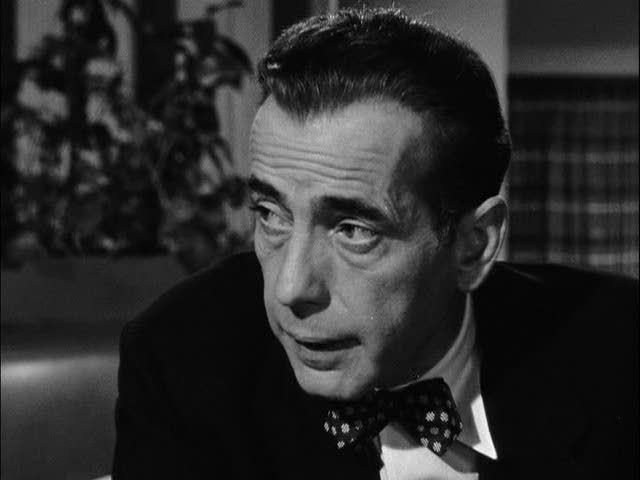
"I was born when she kissed me. I died when she left me. I lived a few weeks while she loved me." These romantic, poetic lines, spoken by Humphrey Bogart's Dix Steele in Nicholas Ray's In a Lonely Place, seem like classic Bogie. Wry, clever, with an undercurrent of melancholy, they're words of love delivered completely without sentimentality or sappiness, the kind of lines that allowed Bogie to be romantic without shedding his tough guy cool. In other ways, though, In a Lonely Place is far from the typical Bogart picture. The film finds the star channeling his charming, wise-cracking persona into much darker territory than usual. Steele is a washed-up Hollywood screenwriter, sick of adapting slick, soulless "epics" into slick, soulless films, but also unable to energize himself into writing anything better. He's reduced to hanging out at bars, drinking and occasionally getting into the violent altercations he's become known for — his temper is so quick it seems like he's mostly just looking for an excuse to punch someone. He becomes a murder suspect after a hat-check girl he took home is strangled and thrown from a car, and despite an alibi from his sexy next-door neighbor Laurel (Gloria Grahame), it's not quite clear whether Steele did or didn't commit the murder. This isn't the typical "wrong man" thriller one would expect from a Hollywood leading man in a situation like this; the audience is invited to question Steele's innocence at every point, and key details that might've pointed in one way or the other are deliberately elided by ellipses.
This ambiguity extends to Laurel as well, who is attracted to Steele for his "interesting" face. It's not certain whether she provides his alibi because she really saw anything, or if she just wants to get closer to him. These tensions and suspicions hang over the couple's relationship from the very beginning, and even as Laurel inspires Steele to begin working harder, the darker side of Steele's personality is always threatening to take over. Nowhere is this darkness more apparent than a remarkable scene where Steele describes a possible murder scenario to a policeman friend and his wife. Steele invites the couple to sit next to each other as though they were the killer and his victim, and he faces them, describing how the strangling might occur. Ray focuses his camera on Bogart's face, illuminated with a bright light, giving him a sinister intensity as he eagerly walks the couple through the killing. It's a chilling scene that leaves Steele's audience, both within the film and those watching the film, visibly shaken.
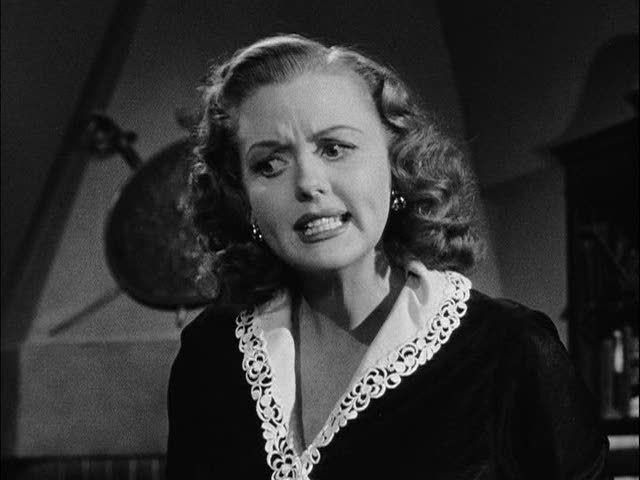
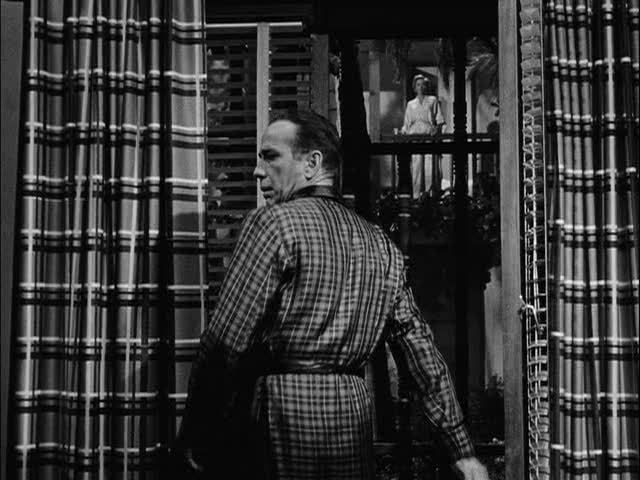



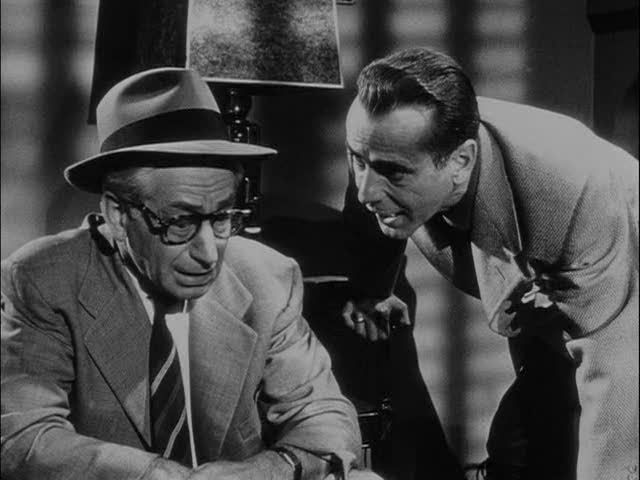
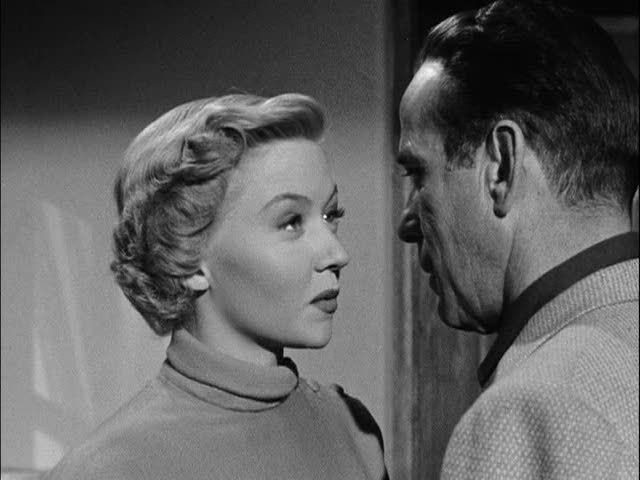

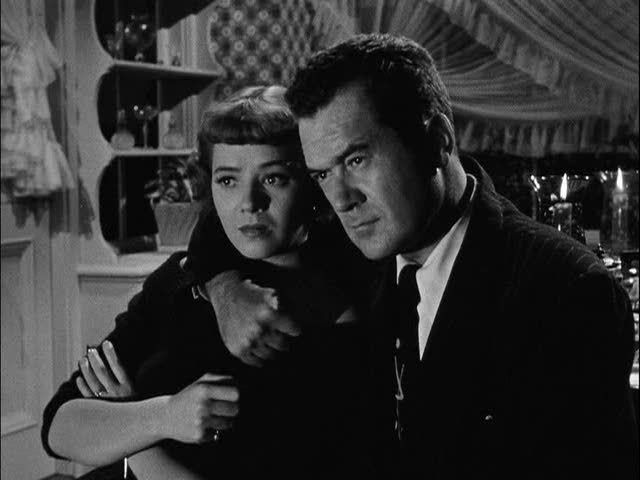
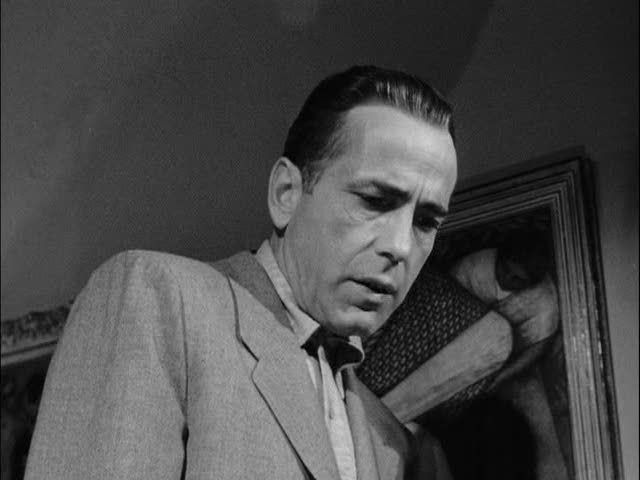
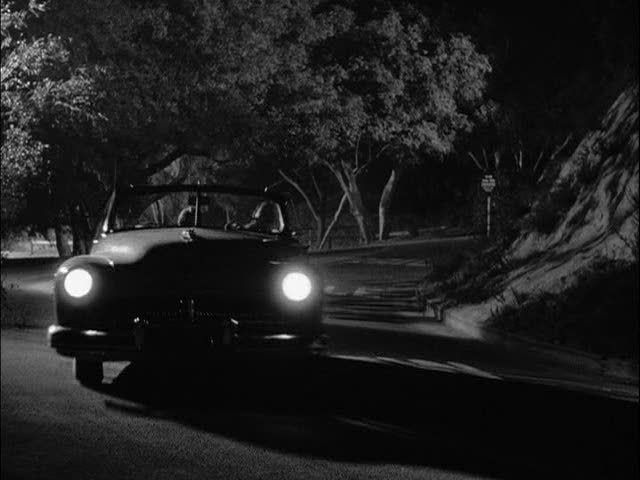
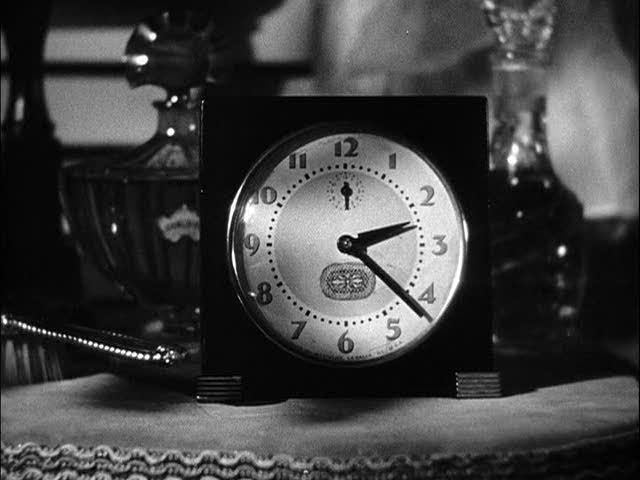
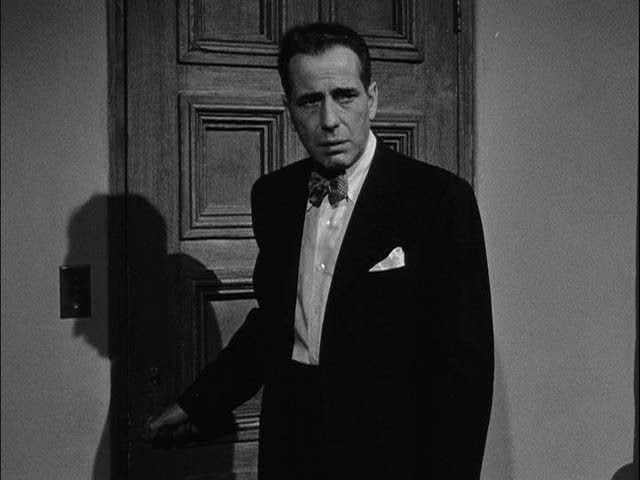

7 comments:
Great, great, great pick Ed. My favourite Bogart performance (though I admittedly need to catch up on a whole bunch) and a beautifully lit film.
One criticism though...You desperately need more screencaps of Gloria Grahame. My god, she's a sensual creature.
Sounds like a perfect example of film making meeting high art in a way that's still more entertaining than just purely intellectual. I'll have to add this to the ever growing Netflix cue...
Thanks for the comments. I'm not sure why I wound up with so few Gloria Grahame shots, definitely an oversight. She has such no-nonsense sensuality in this film.
OCK, if that's what you're looking for I think you'll enjoy this film. It's a smart and emotionally complex film and it's also a whole lot of fun to watch, especially for the great performances.
A great film, maybe Ray's finest. I reviewed it as part of my Hooray for (Hating) Hollywood series back in September:
http://thedancingimage.blogspot.com/2008/09/in-lonely-place.html
You do a great job highlighting the film's ambiguity - it's fascinating how we're led to distrust Bogart ourselves, even as we identify with him.
This is one of my favourite films as well. This is an extremely moody, dark and disturbing piece of work - the violence here is psychological rather than physical.
I would like to make a personal observation here regarding the basic theme of the movie. Thematically, I found it to be very similar to Camus' Outsider. In both the works, the protagonist's severe detachment and lack of any outward show of grief or concern have made them criminals in the eyes of a deeply hypocritical society; the actual crime has taken backseat. In either case, had the protagonists shed a few crocodile tears and expressed synthetic sorrow for the sake of the society, they might have escaped and earned sympathy/empathy. Hence, this sharp social critique forms a vital part of the movie as it was for the book. The major difference between them lies in the tonality. Where the book was contemplative and philosophical, the movie is cynical and hard-edged.
I think Louise Brooks once said that Bogart was an insecure drunk and not the rebel tough guy Hollywood made him out to be.
This is a great film, though. Thanks for reviewing it.
Just commenting on another loved film that we share in common. The scene where Steele reenacts a scenario in which the crime could have committed is probably the single greatest performance that I can think of from Bogart. It is absolutely intense. When I first watched the movie, I never really thought that the Dixon Steele character was the murderer, but memories of that scene always left at least a little bit of doubt in my mind.
Post a Comment